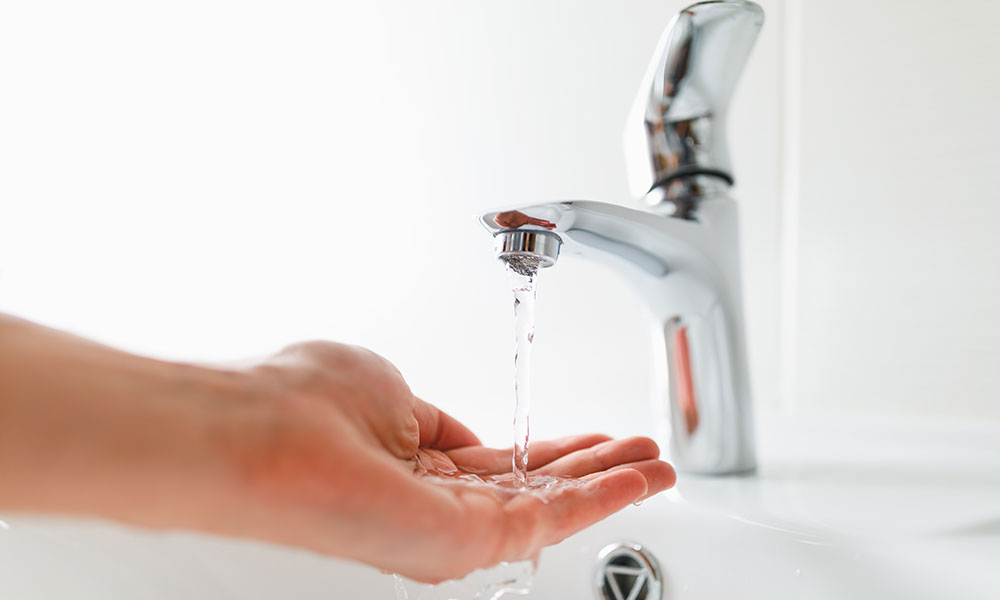What are your concepts about 4 Ways to Troubleshoot Low Water Pressure?

Low tide stress in your home can be a discouraging trouble, affecting everything from bathing to cleaning dishes. If you're experiencing weak water flow, there are a number of possible reasons and solutions to discover. In this guide, we'll go over typical factors for low water stress and functional actions to attend to the issue efficiently.
Introduction to Low Tide Stress
Low tide pressure occurs when the flow of water from your taps, showers, and various other fixtures is weaker than common. This can make daily jobs much more difficult and less effective. Understanding the causes of low water pressure is crucial to discovering the appropriate service.
Common Root Causes Of Low Tide Pressure
Faulty Stress Regulators
Pressure regulatory authorities are in charge of keeping regular water stress in your house. If they malfunction, it can result in low tide pressure or irregular circulation throughout the house.
Local Water Issues
Often, the issue lies outside your home. Metropolitan water problems, such as main line leakages or maintenance job, can momentarily minimize water stress in your location.
Pipeline Obstructions
In time, pipelines can become clogged with natural resource, debris, or debris, restricting the flow of water. This is a common problem in older homes with galvanized steel pipes.
Corrosion
Rust within pipes can lead to leakages and reduced water stress. Rust build-up can restrict water circulation, specifically in maturing plumbing systems.
Exactly How to Identify Low Tide Pressure
Examining Pipelines
Check visible pipelines for indications of leakages, rust, or clogs. Pay attention to any kind of unusual noises, such as knocking or rattling pipelines, which could suggest concerns within the plumbing system.
Consulting with a Plumber
If you're not able to identify the reason for low tide pressure, think about working with a professional plumber to conduct a thorough evaluation. They can determine underlying problems and suggest appropriate services.
Checking Faucets and Components
Beginning by examining the water stress at different taps and fixtures throughout your home. If the concern is separated to certain locations, it may indicate localized troubles.
Do It Yourself Solutions to Take Care Of Low Water Stress
Flushing Water Heater
Debris buildup in the hot water heater can restrict flow and lower effectiveness. Purging the tank occasionally aids remove sediment and preserve ideal efficiency.
Examining Stress Regulator
Guarantee that the stress regulatory authority is functioning appropriately. Readjusting or changing the regulatory authority can assist bring back proper water pressure throughout your home.
Cleansing Aerators and Showerheads
Natural resources can build up in aerators and showerheads, lowering water flow. Eliminate and clean these parts routinely to boost water pressure.
Clearing Clogs in Pipes
For minor clogs, attempt using a plumbing snake or chemical drainpipe cleaner to clear obstructions in pipes. Beware when making use of chemicals and follow safety guidelines.
When to Call a Professional Plumber
If do it yourself initiatives stop working to solve the issue or if you believe considerable plumbing troubles, it's ideal to look for assistance from an accredited plumber. They have the know-how and devices to deal with complicated problems safely and successfully.
Preventive Measures to Preserve Water Pressure
Installing a Stress Booster
Think about installing a pressure booster pump to boost water pressure in locations with constantly low circulation. This can be particularly helpful for multi-story homes or residential properties with high-demand fixtures.
Tracking Water Use
Be mindful of water usage behaviors and prevent overtaxing the plumbing system. Basic adjustments, such as incredible showers and washing loads, can help preserve ample water stress.
Normal Upkeep
Arrange regular maintenance for your plumbing system to avoid problems such as rust, leaks, and clogs. Dealing with small troubles early can assist avoid even more substantial repair services in the future.
Final thought
Handling low tide pressure can be frustrating, however identifying the underlying reasons and implementing appropriate remedies can restore optimum circulation throughout your home. Whether it's cleaning up aerators, inspecting pipelines, or consulting with a plumber, taking proactive steps can guarantee a constant supply of water for your everyday needs.
FOUR WAYS TO FIX LOW WATER PRESSURE NOW
Turning on a shower or faucet only to find the water comes out in a sad, slow drizzle is never a good feeling. How exactly are you supposed to wash a pan or take a quick shower when it takes 10 minutes just to rinse off a little soap? The good news is that when your water pressure is bad, there's always a cause: typically one that can be easily fixed. Here are some of the most common causes of low pressure and what you can do to fix the issue:
DEBRIS AND MINERAL DEPOSIT BUILDUPS
If you notice low water pressure from just one or two of the fixtures in your house, the problem likely has to do with debris buildup. Water is full of minerals and other debris, all of which can accumulate in your pipes and on your fixtures. This can cause a blockage that affects how much water flows through. To fix this, try filling a small plastic bag with white vinegar, and use a rubber band to hang it around your showerhead or faucet. Let the head of the fixture soak for a few hours, and the vinegar should loosen the deposits.
WATER LEAKS
Leaks are another common cause of low water pressure. If water is flowing out of your plumbing through a hole or crack before it can reach your fixture, the pressure coming out of the faucet or showerhead will be lower. A plumbing professional is your best bet for finding and repairing a leak in your water supply pipes.
Leaks are another common cause of low water pressure. If water is flowing out of your plumbing through a hole or crack before it can reach your fixture, the pressure coming out of the faucet or showerhead will be lower. A plumbing professional is your best bet for finding and repairing a leak in your water supply pipes.
A VALVE ISSUE
If you have low water pressure throughout your home, check your main shut-off valve to make sure it's completely open. You may also want to see if there's a pressure-reducing valve installed. If there is, have a plumber help you adjust the settings to get the pressure you're looking for.
OTHERS USING WATER
Believe it or not, your low water pressure could be caused by your neighbors. If you notice low pressure at certain times of day, it may be because you and the people living next to you have similar schedules - when everyone is showering at the same time, the pressure will be lower in every home. Low pressure throughout the neighborhood may also be caused by an issue with your municipal water supply. If that's the case, call the supplier to see if they're working on the issue.
https://www.rotorooter.com/blog/water-leaking/low-water-pressure-fixes/

I am just very interested by 9 Reasons for Low Water Pressure in Your House and I hope you enjoyed reading the entry. Do you know another individual who is enthusiastic about 4 Ways to Troubleshoot Low Water Pressure? Do not hesitate to promote it. I treasure reading our article about Dealing with Low Water Pressure in Your Home.
Call